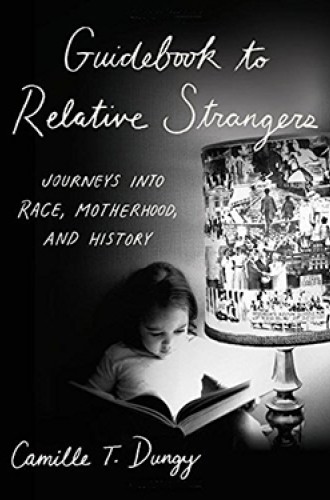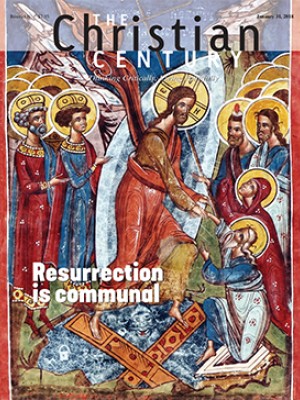The vocation of being a stranger
As a mother and a woman of color, I read Camille Dungy's book as a personal roadmap.
“I was hungry and you gave me food, I was thirsty and you gave me something to drink, a stranger and you welcomed me” (Matt. 25:35). These words of Jesus are often quoted to frame conversations about radical hospitality. A common conclusion is that Christians, as followers of Jesus, should welcome the stranger. The one doing the welcoming usually maintains a great deal of power in this transaction, while the one being welcomed must trust the person who offers food, drink, and shelter.
But Matthew 25 also reminds us that if we want to live like Jesus, we need to reflect on what it’s like to be on the receiving end—as the stranger who is welcomed. In a vulnerable and beautifully crafted collection of essays, the celebrated poet Camille Dungy shows how she navigates being a stranger as a black woman and mother.
Read our latest issue or browse back issues.
The essays are ordered in kairos rather than chronos time, using poignant moments to reveal how the author’s capacity for empathy has been expanded through motherhood and by being a guest in places as varied as the Alaskan tundra and the shores of Ghana. Drawing on the emerging body of research into “epigenetics: memory retention through inherited genome,” Dungy explores how her feelings of comfort and discomfort among various people and situations stem from the people who came before her and made her who she is. Rather than try to erase, ignore, or slap a Band-Aid on painful memories, she brings them to the light. But the book is also rich with moments of pure joy—for example, her delight in her child’s acquisition of language or discovery of natural beauty. Yes, these essays seem to say, we live in troubling times with a troubling history, but there is also ample room for love and grace.
In the fall of 2017, torch-wielding white supremacists in Charlottesville brought national attention to a long-held discomfort within the African American experience around open flames in southern woods. Reading Dungy’s chapter “Tales from a Black Girl on Fire, or Why I Hate to Walk Outside and See Things Burning” validated for me the anxiety that I have felt about southern bonfires. The chapter begins with Dungy describing her increasing anxiety as she drives a rural road at night to be a guest at a bonfire near Lynchburg, Virginia: “Dead ropes of kudzu dangled here and there, and all my people’s horror stories worried through my head. Why was I out in the country at night? Didn’t I know better?”
I recall a warm winter night when my husband built a bonfire behind our house. My teenage son got so warm that he peeled off his hooded sweatshirt and hung it on the rope swing. When I saw the fire that my husband had built next to my son’s clothes on the swing, I imagined an effigy of my child hanging there. As grotesque images flashed before my eyes, I had to turn away from my husband’s pink face and remind myself that we are family.
In that moment, I uttered to myself nearly the exact words that Dungy describes using: “Calm down. It’s safe out here. I had to repeat this to myself many times.” Dungy’s fear of fire is deepened by the years she spent in California, where “a spark . . . could kindle a firestorm.” As the chapter draws to a close, fire switches from the literal to the metaphorical: “You’ve been taught not to play with fire. Your whole life, you’ve known the rules. When you live in this country, you have to know the rules. . . . It’s inhospitable here, dry and dangerous. . . . It’s a tinderbox, this country.” Is she describing only the arid California landscape or also the landscape of an increasingly polarized nation?
Thankfulness emerges as a theme, a cooling stream that functions as antidote to fear and anxiety. In the introduction, Dungy thanks the many people who loved and shaped her but also the “people who made it clear that they hated me.” She goes on to thank the ones “who made of themselves examples of the ways that, in the face of such anger, I could proceed.” As the book draws to a dramatic close at the horrific slave dungeons in Ghana, thankfulness rises again to the surface. Thinking it rude to bring snacks with them on a tour of a place where people were “tortured, some unto death,” Dungy describes her humble amazement as her toddler daughter approaches another African American member of the tour group and says, “Auntie, I’m hungry, do you have any food?” Dungy’s description of watching her daughter express need and an abundant, uncanny thankfulness helps the book to end on a hopeful and triumphant note.
As a mother and woman of color who is obsessed with how race and history affect our daily interactions, I embraced this book as a personal roadmap, grateful for its poetic prose and depth of historical and cultural relevance. As a follower of Christ, who tears town the walls of enmity between people, I hope that readers—especially those who may not fully understand why people still talk and think about the impacts of slavery and racism on current events—will take the time to soak up Dungy’s wisdom. Her gems of prophetic insight may help all of us to understand the roots of our fear as we seek the courage and grace to relax into offering and receiving love from strangers.







